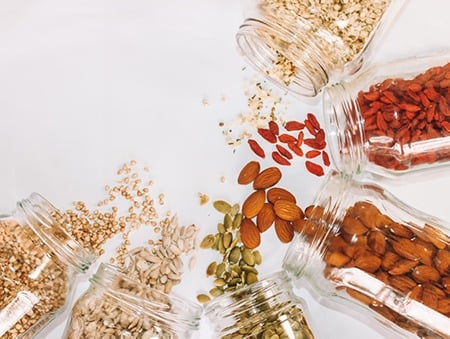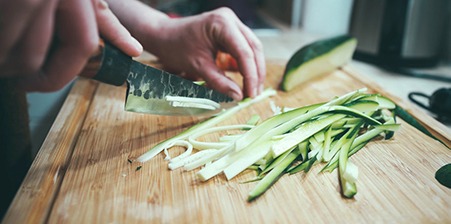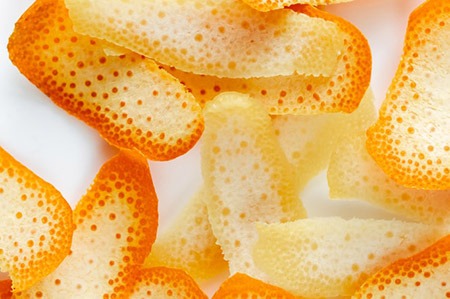
A kitchen can be one of the most wasteful places in the home. My family and I are always searching for new and creative ways to reduce waste in the kitchen. From reducing our overall food waste to finding fun ways to reuse items, I’ve made a big list and hope you find it useful!
So what are some steps to reduce waste in the kitchen?
40 Steps to Reduce Waste in Your Kitchen
1. Composting
This is the first step but also should be the last stop for unwanted food scraps. Basically, anything that was “alive” can be composted, just no meat, bones, or fish scraps as they will attract pests. Composting can reduce your waste in the kitchen by up to 30% and can add valuable nutrients to your garden soil. You can start a compost bin in your kitchen, just make sure it’s covered to avoid smelling.
2. Upcycling

Recycling is great for many materials however, it can be very energy intensive getting the material from your home to the recycling facility to be processed and broken down. Instead of looking to recycle first, look to upcycle – that is, reusing materials in a creative way. Glass bottles and jars can be reused in the kitchen for many purposes, eliminating the need to toss them in the recycling bin.
3. Recycle
If you can’t upcycle a material by reusing, then your next step is to recycle. Most paper, cardboard, glass, metals, and some plastics can be recycled but do your research to see exactly which types of materials can be recycled in your area. According to the Sustainable Packaging Coaliton, 73% of the U.S population has access to curbside recycling programs. Make sure you have the correct separating bins accessible in your kitchen to make it easy for all family members to recycle.
4. Choose Eco-Friendly Packaging
Look to see which types of items can be recycled in your area. Search for items that are packaged with eco-friendly materials. These could be made from recycled materials or those which are reusable, compostable, and/or biodegradable. When you have this small step in your mind when shopping, you can reduce your kitchen waste considerably.
5. Only Buy What You Need
This may sound obvious but when shopping, look to practice self-control by buying on the food items you will need. Meal plan around what you already have in the house and buy items that you need for those meals. I always do my best not to shop when hungry otherwise I make impulse “hungry” purchases that will go to waste!
6. Grow a Garden
A great way to reduce your waste is to start growing your own fruits and vegetables. This may seem like a daunting task but can be a fun new hobby and will also save you money over the long run!
7. Preserve Your Food
If you have already taken the step of growing your own food, learn how to preserve your food. Turn your cucumbers into homemade pickles or make a sauce or juice out of your fresh tomatoes. Canning, dehydrating, and fermenting are great ways to preserve what you have grown.
8. Donate Your Food
Just had a huge dinner party or potluck and stuck with a whole bunch of food you can’t finish? Donate your food! Be a friendly neighbor or co-worker and give your food away. You can also contact your local food shelter and see which foods they will allow you to donate.
9. Buy in Bulk

Instead of buying foods that come in excess packaging, look to buy foods that are available in bulk. Many supermarkets offer the option of bulk purchasing for dried goods. Take a reusable cloth bag or container with you when you shop for fresh produce or bulk items like nuts, grains, oats, and dried fruit. This will reduce your amount of plastic waste at the supermarket and also protect your family from toxins that can leach from plastic into your foods.
10. Reusable Shopping Bags
When shopping at the supermarket I always bring my reusable cloth shopping bags. I can’t stand using the plastic bags as they offer anymore. Not only are they wasteful but the bags aren’t very strong and always seem to break! When you have a limited amount of bags you can fill it will also cut down on your excess purchasing too.
11. Reusable Containers
Avoid using plastic wraps, aluminum foil, and plastic zip lock bags. Consider using eco-friendly reusable storage containers such as mason jars, bags, and containers to store your food.
12. Bring a Container for Leftovers at Restaurants
When I go to a restaurant that I know always serves large portions, I bring along a reusable and sealable container to put my families leftovers in. This will spare the use of excess paper and styrofoam packaging that comes along with takeaway food and prevent any food waste.
13. “Clean out the Cupboard” Recipes
Dedicate one night a week to “clean out the cupboards.” Find a recipe that is flexible enough to accommodate whatever you may have on hand in the kitchen that needs to be used up. This could be casseroles, stir-fries, soups or anything else you can imagine. It’s a challenge that will exercise both your creativity and ingenuity in the kitchen helping you discover new flavor combinations!
14. Bring Your Lunch to Work
Instead of spending money to buy lunch on the go, prepare your homemade lunch the night before. This is a great way to avoid all the extra packaging that goes along with takeaway food. This will also save you some money! Store your food in a reusable and eco-friendly container.
15. Carry Your Own Silverware
Carry a personal set of cutlery for when you go out to a casual restaurant or for food on the go that is using disposable silverware. It’s simple to make a carrying case by wrapping cutlery in a cloth or dish towel easily fitting inside of your bag. It’s a simple step that can help prevent additional plastic filling up our landfills!
16. Carry a Water Bottle
Single-use containers for drinks and coffee to go are a huge reason why there is so much plastic filling up landfills. A reusable water bottle is a light and easy way to prevent this pollution. Many coffee shops are even giving discounts to those who bring their own mug!
17. Stop Using Bottled Water
Avoid buying a case of bottled water which can be wasteful and instead buy a home water filter. You can also buy eco-friendly glass containers to store your water. These are reusable and come with a pop-off swing top to ensure the freshness of your newly filtered water.
18. Reduce Paper Towel Use
For cleaning, use microfiber washcloths that will be much more eco-friendly than using paper towels. These are fantastic as they are washable, reusable, and can dry very quickly. If you have to use paper towels, use ones that are compostable and made from recycled paper.
19. Make Your Sponge Last
Avoid constantly throwing away your used sponges. You can preserve the life of your sponge by boiling it for several minutes to kill any germs or odors. Also, a quick two minutes in the microwave will kill more than 99% of the germs on it.
20. Use Eco-Friendly Sponges
Most standard sponges are made from petroleum foam and can contain heavy metals, harsh adhesives, polyether, polyurethane, PVC and BPA. Too many letters equal too many chemicals to me! There are many eco-friendly choices available that are non-toxic and environmentally friendly.
21. Refill Hand and Dish Soap Dispensers
Avoid buying new hand pump dish and soap containers. Instead, opt for a refillable container that you can buy once or twice a year in a large quantity and transfer to your soap dispensers. Make sure your soap is eco-friendly!
22. Cut Efficiently

A lot of food waste can come from cutting produce. Many of us simply cut off the tops and bottoms of our fruits and vegetables and we waste a potentially usable part of the produce. Use a paring knife to cut carefully around the stem on your peppers, tomatoes, and strawberries. Keep a close cut on the ends your carrots, celery, and onions. By keeping the peels on some of your organic produce, you can actually enhance the flavor and cut down on cooking time.
23. Brush Instead of Peeling
Instead of peeling off excess food waste, buy a simple vegetable brush to give them a thorough scrub down instead of peeling. This can also help improve the flavor of your vegetables.
24. Save Your Scraps
For the vegetable scraps that you have to cut off, you can save them to make a tasty homemade broth or stock. Vegetable scraps like herb stems, celery or carrot ends, and onion peels are all great for making broth, as are non-vegetable scraps like parmesan rinds or roasted meat bones. Make sure your vegetable scraps are clean and store them in a reusable freezer bag until you have enough to make a batch of homemade broth.
25. Save Energy with Induction Burners
Induction cooking is a great way to reduce your energy consumption in the kitchen. Boiling or heating something up on the gas or electric stovetop can spend a lot of energy (and your money). Induction stovetop burners are more efficient and waste very little heat energy.
26. Use a Pressure Cooker
A large investment but also an energy-saving approach. Pressure cookers cook foods in roughly a third of the time required for conventional pots and pans. There are several high-quality models available on the market that are either plugged in or used on the stovetop.
27. Reuse Stale Bread
When your loaf of bread becomes hard and stale, it’s the perfect time to reuse it by making croutons for a delicious salad or soup! Cut your stale bread into cubes, cover them with your favorite herbs and drizzle with oil. Bake in the oven until crispy and you have croutons. You can also easily make breadcrumbs by throwing your stale bread into the blender or food processor. You can store these in the freezer to prevent any potential mold growth.
28. Reuse Coffee Grounds
Coffee grounds get tossed into the trash on a daily basis. They are a valuable compostable material that can be added to soils for nutrients and can repel garden pests. They also serve as great natural refrigerator odor eliminators. Simply dry the grounds and pack them into a stocking to allow for air flow and place them in the refrigerator.
29. Save Citrus Peels

Citrus zest can add amazing flavor to your food. Save your orange and lemon peels for later by freezing them in reusable bags. You can easily zest a frozen peel and have an easy way to add more flavor to your meals. Orange peels can also be ground up to keep ants and mosquitos away and will eliminate any musty smells you may have in the kitchen.
30. Brown Bananas Become Bread
Just because your banana is black and bruised does not mean it needs to go to waste. Overripe bananas make for a flavorful banana bread, which is one of my kids’ favorite baked treats!
31. Crisp up Your Snacks
Instead of throwing out your chips when they are stale, throw them in the microwave for 10 seconds or 3-5 minutes in the oven. This will give you a crisper and more edible snack. Leftover pizza in the fridge? Skip the microwave and throw it on a skillet for 4-5 minutes on medium heat. This will give you a crispier and more enjoyable leftover pizza crust than a soggy slice out of the microwave.
32. Make Ice Pops
Don’t pour out your flat soda. Instead, pour some into an ice cube tray, stick toothpicks or popsicle sticks in each space, and enjoy a cool popsicle after they freeze. These make for a refreshing summertime treat for the whole family!
33. Upgrade Your Vodka
Is old cheap vodka still sitting in the liquor cabinet? Upgrade it by running it through a water filter several times. This won’t transform it into a top-shelf vodka but it will make it drinkable and taste much better!
34. Save Some Rice, Save a Device
Rather than tossing out that old rice that’s been forgotten for a few months in the back of the cupboard, use it to save water-damaged electronics. Simply place your device completely submerged in a dry bowl of rice for at least 24 hours. This will allow the device to drain out any water it may have taken on when it got wet. A complete ricesaver!
35. Conserve Your Lemons
When you have a recipe that calls for a few drops of fresh lemon juice, no need to slice the lemon up and squeeze. Puncture the rind with a toothpick and gently squeeze out the small amount of juice that you need, allowing you to conserve the lemon for a later time.
36. Oil Your Eggs
Did you know you can prolong the life of your fresh eggs? Dip a cloth into vegetable oil and rub the shells before storing in the fridge. The oil will preserve the freshness for an additional 3-4 weeks, eggciting!
37. Save Those Spuds
If you end up peeling too many potatoes for that potato salad or mashed potatoes, don’t waste the extras. Simply put them in a bowl, cover with cold water, and add a few drops of vinegar. This will allow them to keep in the fridge for 3-4 days.
38. Long Live Your Lettuce
Your lettuce will keep longer if you transfer it from a plastic bag to a more spacious paper bag with some air before storing it in the refrigerator. If any outer leaves become limp and discolored, don’t worry, they help keep the inner leaves crisp and fresh.
39. Freeze Your Fruit
Buy fresh produce at the local farmer’s market or grocery store and freeze it yourself for smoothies, juices, and any future cooking recipes. Make sure you use reusable freezer bags that will stand the test of time.
40. Soak Your Beans and Greens
Soaking certain foods reduces cooking time as well as gas or electric use. Beans can soak up a lot of water as they cook, so it can also mean less water use. It takes only a few seconds to throw a cup of beans or grains into a bowl of water before going to bed, and it will cut the cooking time by half. Soaking for an hour can also make a big difference. This method also applies to noodles, lentils, and white rice, foods that you wouldn’t normally think to soak.
Final Thoughts
I hope that these steps will inspire you with some ideas to reduce waste in the kitchen and become more eco-friendly. What really helped me was reevaluating my daily routine and searching for areas in the kitchen in which I could become less wasteful. Be creative, this is a list of ideas that I have researched but I am sure there is something else you can discover!
Related Questions
What’s the difference between compostable and biodegradable? Biodegradable items are any material that breaks down and decomposes in the environment whereas compostable goods are an organic matter that breaks down to become a pile of nutrient-rich soil. Some materials decompose much faster than others and compostable items are made from natural materials.
What does eco-friendly mean? Eco-friendly is anything that is not harmful to the environment. Eco-friendly products are designed to prevent contributions to air, water, and land pollution. You can engage in eco-friendly habits or practices by being more conscious of how you use resources.




